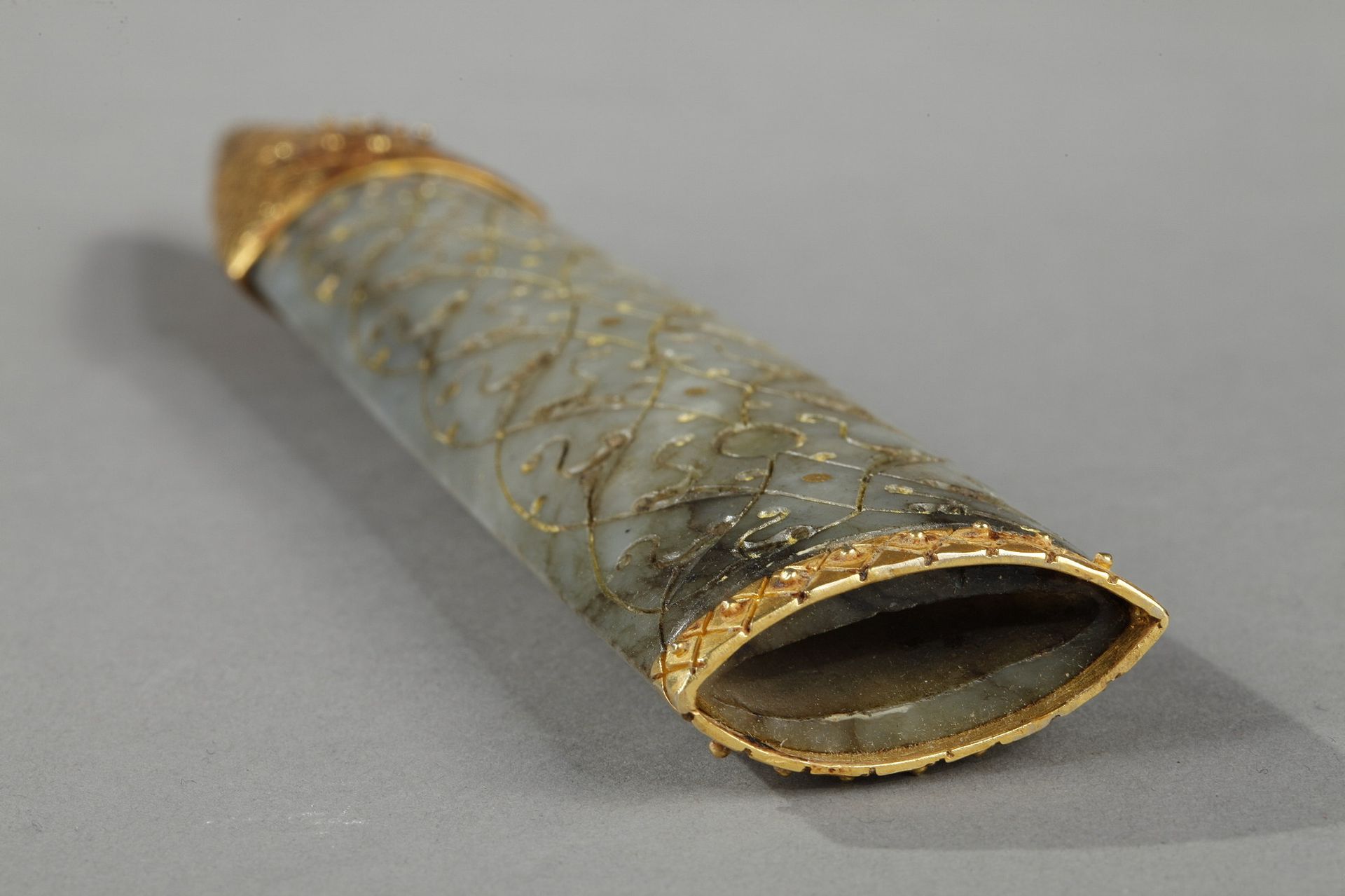Description
FOURREAU DE POIGNARD EN JADE INCRUSTÉ Á L'OR, LA MONTURE POSTÉRIEURE
TURKEY, OTTOMAN ART, 18th AND 19th CENTURIES Green jade scabbard with engraved and gilded decoration on one side, and gilded metal mounts. Interlacing palmettes punctuated with gold dots on one side, and a lattice of discs and leaves on the other. The mounts are chiseled with checkerboard patterns. A GOLD INLAID JADE SCABBARD WITH LATER MOUNTING, TURKEY, OTTOMAN, 18TH AND 19TH CENTURY. H: 18 cm Jade was highly prized under the Ottomans and many jade objects - jugs, ewers, chests, etc. - were decorated with interlacing palmettes and inlaid with gold and precious stones from the 16th century onwards, as attested by numerous pieces in the Treasury of the Topkapi Palace in Istanbul. As far as weapons are concerned, jade was mainly used for the handles and ends of scabbards, and more rarely for the scabbard itself. The metal mounts on this scabbard are reminiscent of weapons from the Mahmud II period (1808-39). An 18th-century Ottoman knife in the Furusiyya Art Foundation collection has a handle with a related palmette decoration (Knights' Art in the Lands of Islam, SKIRA, 2007, cat. 162, p. 174). An Ottoman dagger from the period of Abdulhamid I (1774-89) has a gold damascened blade with a similar network of palmettes (David Alexander, Islamic Arms and Armor in the Metropolitan Museum of Art, New York, 2015, cat. 76, p. 197). The steel blade of a magnificent Ottoman sword, circa 1800, is decorated with a dense network of intertwined palmettes (Robert Hales, Islamic and Oriental Arms and Armour: A lifetime's Passion, Robert Hales C.I. Ltd, 2013, cat. 540, p. 221). Expert: L.S.
46
Online
FOURREAU DE POIGNARD EN JADE INCRUSTÉ Á L'OR, LA MONTURE POSTÉRIEURE
